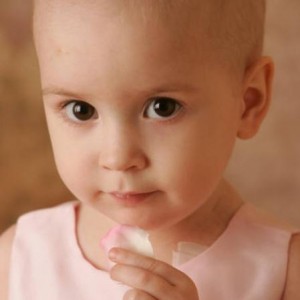 Overview
Overview
The term “cancer” describes a group of diseases in which cells in a part of the body grow out of control. Cancer can originate from anywhere in the body and can spread to other parts of the body. Some cancers form a solid tumor but others, like cancer of the blood, do not. Cancer affects people of all ages, including children and youth. Although cancer among children and teens is rare, cancer remains the leading cause of death from disease in children under 15.
Most cancers that occur in children are caused by changes in the genetic component within the body cell during early childhood. You cannot “catch” cancer nor give it to someone else. Unlike many other diseases, there is no known way to prevent childhood cancer.
Leading Cancer Types in Children and Youth
- Leukemia – Leukemia is the most common cancer type for this age group. It describes a group of cancers of the blood or bone marrow, caused by abnormal production of blood cells.
- Brain and nervous system cancers – This is the second most common type of cancers for children and youth. It can lead to tumors in the cerebellum, brain stem, cerebral hemispheres, and other parts of the nervous system.
- Neuroblastoma – This cancer affects immature nerve cells and usually occurs in infancy or early childhood.
- Wilms tumor – This cancer arises in one or both kidneys and may spread to nearby organs. It usually occurs in early childhood.
- Lymphoma – This is a diverse group of cancers originating from the lymph tissues, such as lymph nodes, lymphocytes (a type of white blood cell), and thymus.
Signs and Symptoms of Childhood Cancer
If you experience any of the following symptoms, be sure to tell your doctor right away so that the problem can be diagnosed and treated. Most of the time, these symptoms may be due to reasons other than cancer.
- Persistent fever, vision problems, headaches, nausea, joint or bone pain
- Chronic fatigue or infections
- Swelling or lump in the abdomen, arm pit, neck, or groin
- Night sweats
- Easy bruising
- Unexplained weight loss
Common Types of Cancer Treatment
- Surgery: Surgery can serve many purposes, including the diagnosis and treatment of cancer. To detect or confirm the presence of cancer, a small tissue sample can be removed from a suspected area. If cancer is confirmed, the tissue sample can also help identify the stage of the disease, although additional examination may be necessary. Surgery can be done to remove part or all of a tumor.
- Chemotherapy: This treatment uses drugs to kill cancer cells. Chemotherapy treats cancer by targeting fast-growing cells. However, this treatment may damage other healthy, fast-growing cells, such as those in the hair, intestine, and bone marrow. Common side effects include nausea, vomiting, fatigue, appetite changes, loss of hair, suppressed immunity, digestive problems and others. Chemotherapy can be given by mouth, or by injection into the vein.
- Radiation Therapy: This treatment uses radiation to kill cancer cells. Radiation therapy works by destroying the genetic material of the cancer cells so they will not be able to grow. Radiation can be delivered from an external machine or from small radioactive materials implanted into the tissues near the cancer site. Similar to chemotherapy, this treatment may cause damage to healthy cells. Depending on the area being treated, side effects vary.
- Bone Marrow or Peripheral Blood Stem Cell Transplant (BMT or PBSCT): These procedures involve the transplantation of blood-forming stem cells found in the bone marrow (the soft material inside the bones) or in the peripheral bloodstream. Stem cells divide and grow into mature blood cells, which serve important functions in the body. Blood-forming stem cells can be damaged by diseases as well as by chemotherapy and radiation. The purpose of BMT and PBSCT is to replace the damaged stem cells with healthy ones. Stem cell transplant is most commonly used in the treatment of leukemia and lymphoma.
For More Information on Childhood Cancer:
- Children’s Cancer Association: http://www.childrenscancerassociation.org/
- National Cancer Institute: http://www.cancer.gov/cancertopics/types/childhoodcancers
- National Childhood Cancer Foundation: http://www.curesearch.org/


